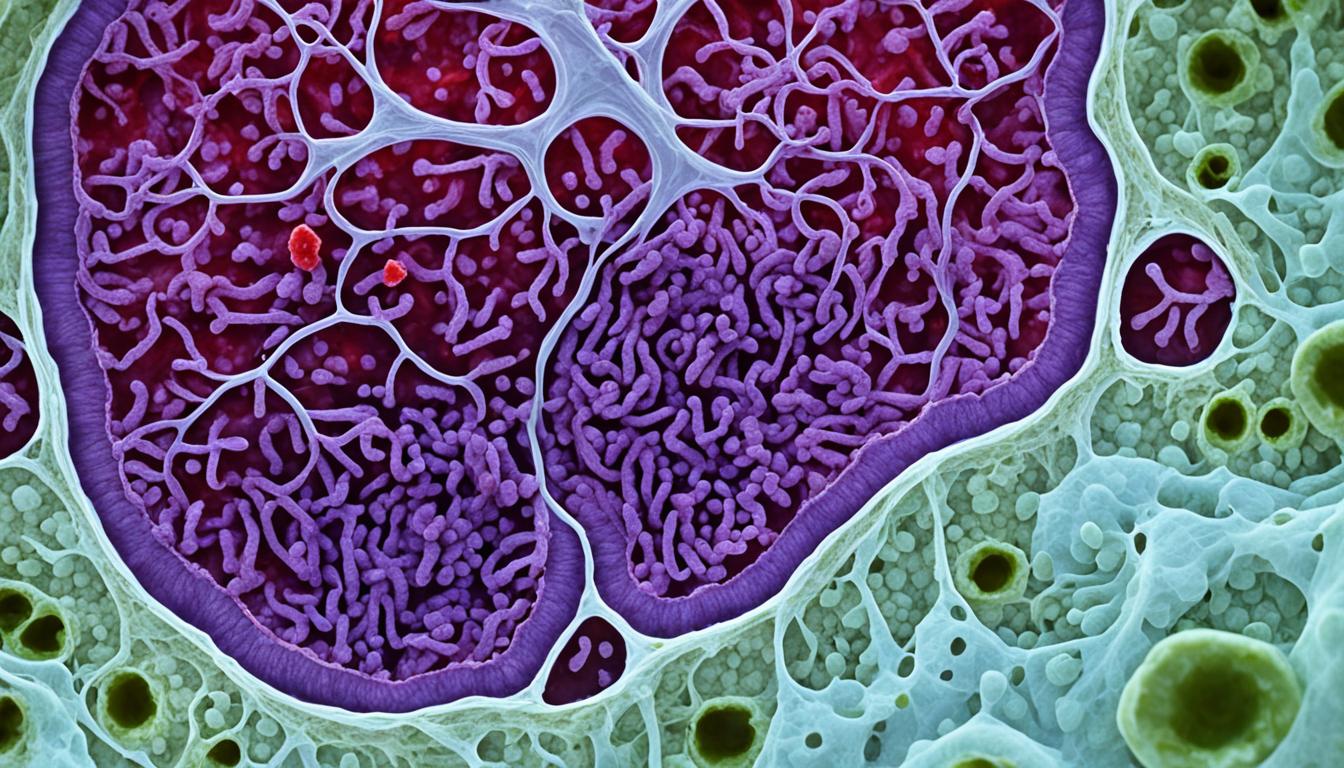Ischemic colitis happens when the large intestine doesn’t get enough blood. This can cause inflammation and damage. It doesn’t directly result from fully blocked blood vessels. The range of people who get this is wide, from 7 to 167 out of 100 million each year. Several health issues and activities such as heart disease, diabetes, and even drug use can make one more likely to suffer from it.
Its main symptoms are stomach pain, a strong need to use the bathroom, and blood in the stool. If you notice these signs, it’s crucial to see a doctor. They’ll do various tests to determine if you have this type of colitis.
Now, what can be done if you have ischemic colitis? The first steps typically involve giving you fluids, letting your bowel rest, and providing antibiotics. But in serious situations, surgery might be the only choice. However, there’s a new and exciting frontier in the treatment of this disease – stem cell therapy. It’s showing great promise in helping people recover from this condition.
Key Takeaways:
- Ischemic colitis is a condition caused by inadequate blood supply to the large intestine.
- Risk factors for colitis ischemic include heart conditions, diabetes, drug use, and previous abdominal surgeries.
- Symptoms of colitis ischemic include abdominal pain, bloody diarrhea, and the urge to defecate.
- Diagnosis involves a thorough medical evaluation and various diagnostic tests.
- Treatment options include supportive care, antibiotics, and surgical intervention in severe cases.
- Stem cell therapy shows promising potential for symptom relief and tissue regeneration in colitis ischemic.
Hemicolectomy – Indications, Procedure, and Recovery
Hemicolectomy is surgery for serious cases of ischemic colitis. If the condition doesn’t improve with drugs or less invasive methods, this may be the next step. It’s done when other treatments fail, when there’s severe stomach pain, or if the colon has damaged tissue.
This surgery may also be necessary if there’s a high risk of colon cancer or if there are frequent severe infections.
Getting ready for this surgery involves not eating for a while, changing your medications, and having some tests. The actual surgery includes being put to sleep with anesthesia. Then, a doctor will either make a cut in your belly or use a small camera to see inside (laparoscopic). They will fix the colon by taking out the sick part and joining the healthy ends back together.
The procedure usually lasts 2 to 4 hours. After, you might stay in the hospital for 3 to 7 days. Most people don’t need special therapy after, but you might need to change your daily habits and do some light exercise to get better.
Adverse Events and Alternatives
After the surgery, there are small chances of getting an infection, bleeding a lot, or having a blood clot in your leg or lung. Another risk is the place where they joined the colon might leak. These are uncommon but you should talk about them with your surgeon before the procedure.
- Infection can be avoided with good wound care.
- Watching carefully for any bleeding and treating it fast is important.
- Against blood clots, patients are given special medications and are encouraged to get up and move soon after the surgery.
- Keeping a close eye to catch and treat any leaks in the colon promptly is key.
If Hemicolectomy isn’t an option, there are other ways to manage colon problems. This could include more drugs or different types of surgery. The best choice depends on your health and what’s exactly going on with your colon. Talking with your doctor is important to figure out the best plan for you.
Conclusion
Ischemic colitis is when the large intestine doesn’t get enough blood. This can lead to inflammation and harm. In severe cases, if other treatments don’t work, a surgery called hemicolectomy might be needed. This surgery takes out the part of the colon that’s affected. Then, it connects the rest.
Hemicolectomy can help a lot by managing symptoms and making life better for people. But, it’s important to know it might come with risks. Also, checking other treatment choices is a good idea, depending on each person’s situation.
Recently, stem cell therapy has shown hope for ischemic colitis. It aims to help rebuild tissue and ease symptoms. However, we still need more studies to know if it’s a long-term solution. But, it could change how we treat this disease in the future.
Fighting ischemic colitis needs a plan made for each person. This plan takes into account how serious the disease is and the person’s own situation. Keeping up with new treatments is key. This helps both patients and doctors choose the best path for good results and a better life.

